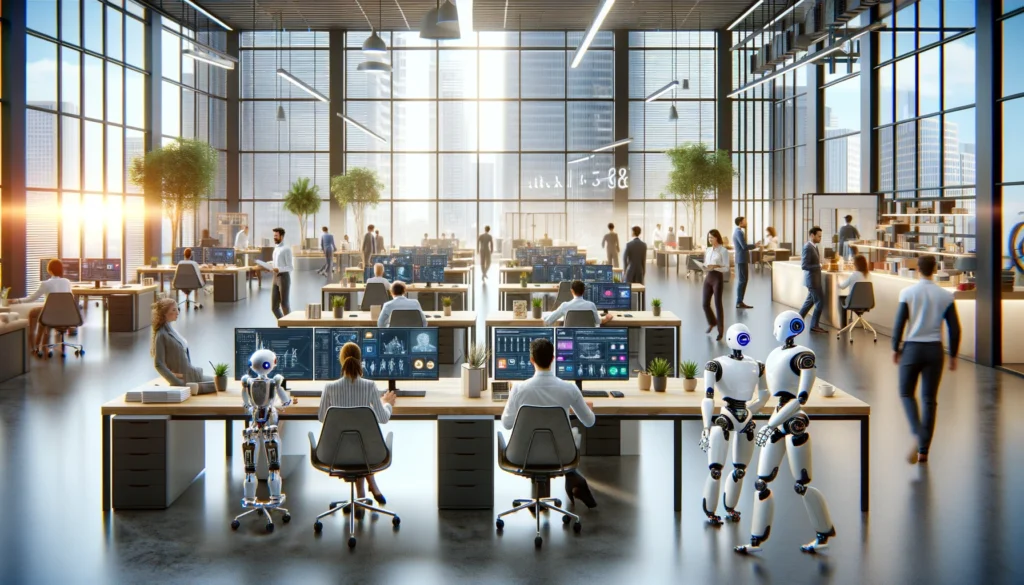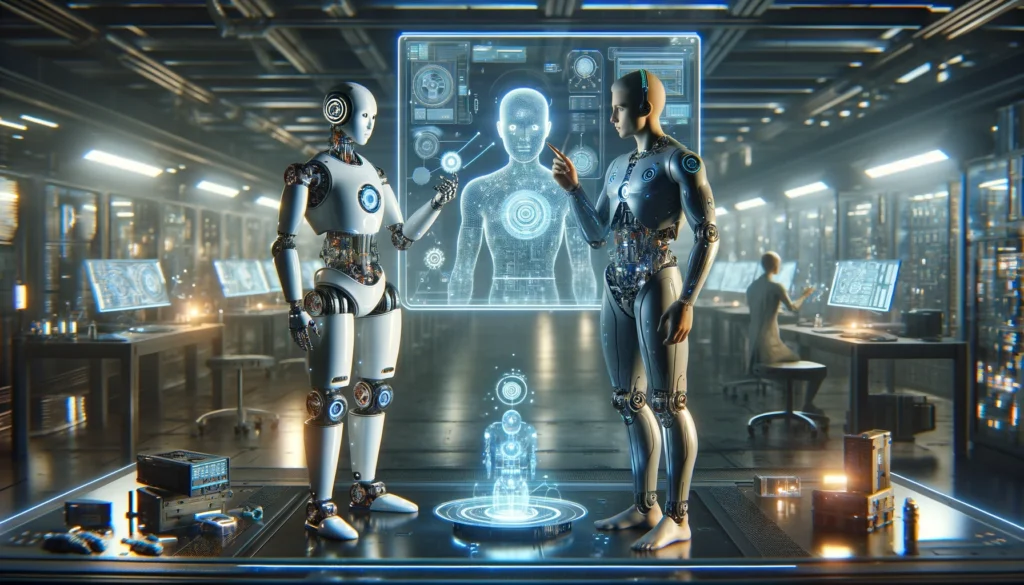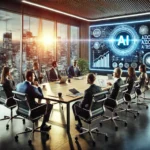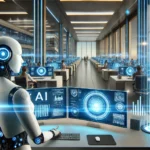- By quade
- 25 March 2024
Nvidia Reveals New Line of AI-Powered Robots
Artificial Intelligence (AI) software has advanced by leaps and bounds, developing countless new models that provide service in many industries. Instead of simple chatbots, there are platforms to create images, voiceovers, and even entire videos. There might even be some AI tools that can be used for coding.
However, it isn’t right to ignore the hardware developments of AI as tech company Nvidia has recently released its plans to create a line of robots powered by AI. This is all part of Project GR00T or Generalist Robot 00 Technology, a planned initiative to upgrade all of Nvidia’s AI services and take them to the next level.
For businesses, this is a huge opportunity for them to upgrade their own AI services alongside Nvidia. With the new software, comes new opportunities to automate and improve your company such as with robots.
What is Part of Project GR00T?

However, it isn’t right to ignore the hardware developments of AI as tech company Nvidia has recently released its plans to create a line of robots powered by AI. This is all part of Project GR00T or Generalist Robot 00 Technology, a planned initiative to upgrade all of Nvidia’s AI services.
This is an important step as the upgrades could serve as the template for the robots. They will include improved intelligence which increases the robot’s performance and productivity. At least that’s what an Nvidia representative told Fox News during an interview.
“With advances in generative AI, there has been a steady stream of developments across the ecosystem where foundation models for robotic tasks have shown the ability to improve the productivity and performance of robotics developers,”
-David Pinto, Senior Nvidia PR manager
A few robots have already been displayed in the recent GTC Conference release. These include several Star Wars-inspired robots. All of these will be powered and operated by the GR00T system.
The increased user capabilities of robots are essential in allowing the industry to grow as it will allow more businesses to use them. They will handle more tasks and essentially function as a robotic worker.
“These productivity gains extend from developing code for the robots to generating new simulations to test and train the robots in unstructured environments. For the robotics industry to scale, the robots themselves have to become more generalizable. That is, they need to add skills more quickly or to bring these skills to new environments. Project GR00T is an important initiative in this direction to advance humanoid robots in multiple embodiments. The foundation models will make the robots better understand complex environments and execute a breadth of robot skills and tasks in both simulation and real world.”
– David Pinto, Senior Nvidia PR manager
With these advancements, they hope that AI will soon be able to handle even more advanced tasks by human workers. This provides more opportunities for companies to automate their process.
Nvidia’s Role As A Hardware Producer

Nvidia’s robot uses a new system developed by Nvidia called Jetson Thor. This program is designed to perform complex tasks and interact “safely and naturally with people and machines,” including a “system-on-a-chip”. That will handle the immense demands on processors to run AI models.
These chips will be considered high quality due to Nvidia’s role in the chip-making industry. They have served clients worldwide as many countries such as the UK have seen a surge in chip purchases to meet the demands of AI.
This resulted in Nvidia’s revenue increasing by 206% during the last quarter of 2023. These chips have gone to the training and development of different AI tools, showing that has become the go-to place for businesses looking for hardware.
Surprisingly, this shift only came recently as Nvidia’s previous products were GPUs. However, the CEO Jensen Huang began to shift his efforts to combine graphic research with AI research. This has brought AI as the company’s largest revenue source. The plans to create AI-powered robots are simply an extension of this effort.
“We are already seeing robots becoming more intelligent and capable of performing multiple useful tasks in a given environment with Isaac Perceptor bringing in advanced AI capabilities for mobile robots and Isaac Manipulator for industrial manipulation arms,”
– David Pinto, Senior Nvidia PR manager
Underlying Issue
One issue that wasn’t addressed in the recent press release was the developmental issues that come from making AI models trained on large language models. While they start well enough, they go on to develop issues later on.
Some problems they encounter include ‘hallucinations’, where the AI’s responses become nonsensical. This is due to the model eventually cannibalizing data and instead of taking it from real people, simply taking it from other AI models, which leads to less accurate results.
This issue has been seen even in some of the most advanced language models. When pressed, Pinto acknowledged that the ideas of general-purpose autonomy is still far off and they are only in early development.
The idea of AI-powered robots is an exciting idea for many people, including us at geniusOS as are the potential developments of Project GR00T. If implemented correctly, these have the potential to drastically improve the services provided by AI, including those in programming. So we will keep a close eye on some of these developments. If you want to contact us and ask about our services, you can reach out to us here.



